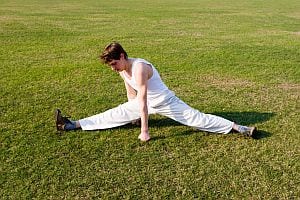statFor some women, it's about making an elegantement at special events or being a couple…

A Note to Parents About Physical Rehabilitation and Young Athletes
 The Wall Street Journal recently published an article noting that “More than 3.5 million children a year receive treatment for a sports injury.” Given this statistic, it’s important for parents to understand that young athletes require a different approach to rehabilitation than adults do.
The Wall Street Journal recently published an article noting that “More than 3.5 million children a year receive treatment for a sports injury.” Given this statistic, it’s important for parents to understand that young athletes require a different approach to rehabilitation than adults do.
Why is this? Primarily because children are still growing and their bones, cartilage and connective tissues are not fully developed. Youngsters whose bones, muscles, tendons and ligaments are still changing can be more prone to suffer musculoskeletal injuries from overuse or acute trauma. When it comes to treating sports injuries in young athletes, physical therapy needs to take these facts into account.
Injuries from overuse continue to rise. Baseball and softball injuries to the shoulder and elbow have jumped by 500% since the year 2000. Very young baseball and softball pitchers (ages 9–14) have greater risk of overuse damage because their elbow joint is not fully developed. Ignoring pitch count limits and incorrect biomechanics can increase the risk.
Middle School vs. High School Athletes
As you example above suggests, children in different age groups have differing risks. This applies to all physical activities. This is why middle school children should restrict their repetitive activities to prevent any overuse injuries. Their age alone puts these younger children at greater risk from such harm.
The Short Story on Rehabilitation
The objective of all therapy is to return the young athlete to health as soon as possible and to determine when it will be safe to resume athletic activities. Because of the differences between middle school and high school children, rehabilitation for younger athletes should de-emphasize certain repetitive aspects of physical therapy to prevent additional injuries from overuse. In addition, the focus for these children should not be on returning the young athlete to their sport, but on thorough healing.
Whatever the sport, the role of a well-trained physical therapist or sports chiropractor can go beyond simply helping with recovery. He or she can also help prevent future injuries and improve a young athlete’s performance. The rehabilitation process itself can teach the young athlete some very important lessons about how to care for his or her body and develop training habits that will improve performance and reduce risk. A well-rounded therapeutic approach will expose a patient to concepts in several areas, including the following:
- Good nutrition and hydration
- Good sleep habits
- Strength
- Endurance
- Balance
- Flexibility and range of motion
- Speed
- Coordination
- Correct biomechanics
Of course, an ounce of prevention is always worth a pound of cure. It’s a good idea for parents, coaches and healthcare professionals to expose young athletes to these concepts BEFORE they’re injured. That said, no amount of teaching and preparation can guarantee that a child won’t suffer some type of sports-related injury. If and when this happens, it’s important to work closely with your physical therapist or sports chiropractor so that your child gets the maximum benefit from his or her time in rehab.




